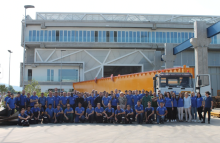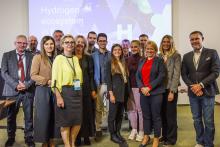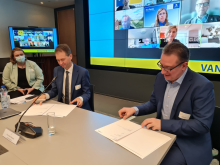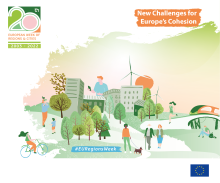Presentation of the Region
Lombardy Region, situated in the Northern-Western of Italy, is strategically located on principal European axes and is one of the leading regions both at national and European level. This geographic advantage contributes significantly to Lombardy's economic interconnectedness within Europe. Lombardy has a population of around 10 million inhabitants, the region accounts for 16.9 % of Italy’s total population, and a very competitive economic performance, with a GDP in 2022 of approximately €439.9 billion, constituting roughly 23 % of Italy’s total GDP (€ 1.9 trillion). As of 2022, Lombardy’s per-capita GDP (PPS) stood at €46,000, above the Italian average of € 34,400 (EU27: €35,400).
Lombardy’s regional employment composition reflects a notable focus on the service sector, which constitutes approximately 43.0 % of the region's total employment, surpassing both the European and national levels. While the region makes up 22.1 % of total employment in wholesale and retail trade, transport, accommodation and food service activities, falling below both national and EU27 shares, the region exhibits comparatively high shares in Information and communication, financial and insurance activities as well as Professional, scientific and technical activities, along with administrative and support service activities, leading to this high share in services.
Regional economy is characterised by a wide variety of industries, ranging from traditional sectors to heavy and light industries. The service industry, mostly related to trade and financial services, has had a strong development in recent decades.
The production system is one of the most developed in Italy and Europe, with a strong presence of SMEs, except for a few very large firms. Entrepreneurship in Lombardy is thus widespread and dynamic, showing an international trend towards innovation, development, and technology.
Lombardy also leads the way with a solid academic system of 15 high quality Universities as well as several public and private research centres with outstanding competence and international relevance. In such a context, the engagement of Lombardy in supporting R&D investments is intense and highly relevant. In 2018, the R&D expenditure in Lombardy amounted to 1.34% of the GDP (Eurostat, 2021).
Lombardy accounts for 20 % of the R&D expenditure, produces 23 % of highly cited scientific publications, fosters 27 % of innovative start-ups, holds 31 % of patents and employs 33 % of the country’s workers in high-tech manufacturing in 2022.
Lombardy's ratio of companies per 1,000 inhabitants surpasses the national average, with 81.3 compared to 74.2, further establishing itself as an appealing region for business endeavours. Innovation is indeed a distinguishing element of the Region’s action, being a driving force to ensure a competitive and modern socio-economic development.
RIS3 Priorities
Following the path launched in the previous programming period, the Smart Specialisation Strategy 2021‐27 confirms its “integrated trajectory” to foster regional development in the framework of the new EU Cohesion Policy, with the final objective of delivering a more targeted ERDF support and harness the potential for smart growth in the Lombardy region, focusing on key R&I priorities and building upon regional competitive strengths.
The new RIS3 outlines key strategic assets, resources, and priorities to lead future regional investments in R&I as well as in favour of industrial modernisation and technology transfer. In such a framework, the promotion of digital transition and sustainable development, along with the strengthening of regional resilience and its capacity to adapt to rapid socio-economic changes, represent the two main trajectories of action. The regional approach focuses on the identification of the main challenges to face in the coming years by concretely addressing 8 innovation ecosystems, firmly keeping the citizens and their needs at the core.
The resources will be concentrated on strategic projects supporting innovation processes in traditional sectors and the development of technological clusters so to help businesses to find strategic opportunities and provide new solutions for citizens.















